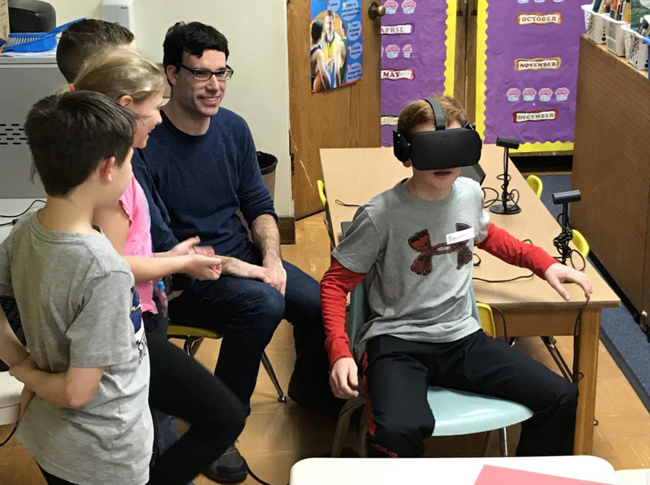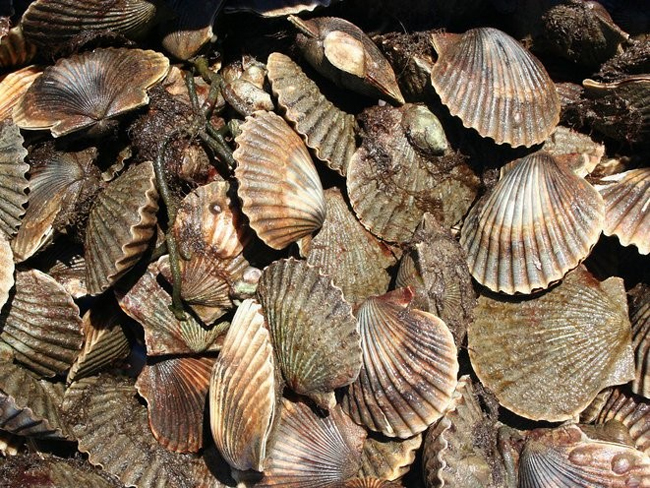safe
Creating a Unique K-12 Science Curriculum: The Efforts of Jase Bernhardt and New York Sea Grant

New York’s coastal regions face numerous challenges, including climate change, invasive species, and water level regulation, which necessitate a deeper understanding of these complex issues among the next generation of scientists and environmental stewards.
The existing K-12 curriculum in New York State does not have a standard specific to marine, coastal, or environmental science, which limits the ability of students to develop a deep understanding of these critical topics.
Developing a coastal science curriculum could inspire students to pursue careers in science, technology, engineering, and mathematics (STEM) and prepare them to address the complex issues facing New York’s coastal regions.
A research team led by Jase Bernhardt of Hofstra University and Mary Jean McCarthy of Adelphi University is working together to develop educational resources for the coastal science curriculum.
The team is utilizing innovative methods, such as virtual reality, to engage students and enhance their understanding of complex coastal science concepts.
The research team is identifying key knowledge gaps in student understanding and developing curriculum that addresses these gaps.
The Need for a Coastal Science Curriculum
Background on New York’s Coastal Environments
New York’s coastal regions face numerous challenges, including climate change, invasive species, and water level regulation, which necessitate a deeper understanding of these complex issues among the next generation of scientists and environmental stewards.
The coastal regions of New York State are home to a diverse range of ecosystems, including salt marshes, dunes, and beaches, which provide important habitats for a variety of plants and animals.
The coastal regions of New York State are also home to a number of important economic and recreational activities, including commercial and recreational fishing, tourism, and shipping.
The existing K-12 curriculum in New York State does not have a standard specific to marine, coastal, or environmental science, which limits the ability of students to develop a deep understanding of these critical topics.
Current K-12 Curriculum Limitations
The existing K-12 curriculum in New York State focuses on a broad range of subjects, including mathematics, language arts, science, and social studies, but does not have a specific focus on marine, coastal, or environmental science.
This lack of emphasis on coastal and marine science education limits the ability of students to develop a deep understanding of these critical topics and prepares them for careers in fields such as marine biology, oceanography, and environmental science.
The lack of emphasis on coastal and marine science education also limits the ability of students to develop an appreciation for the natural beauty and importance of the coastal regions of New York State.
Potential Benefits of a Coastal Science Curriculum
Developing a coastal science curriculum could inspire students to pursue careers in science, technology, engineering, and mathematics (STEM) and prepare them to address the complex issues facing New York’s coastal regions.
A coastal science curriculum could also provide students with a deeper understanding of the complex interactions between the natural and human systems in the coastal regions of New York State.
This deeper understanding could prepare students to make informed decisions about the management and conservation of the coastal regions of New York State.
Research and Development of the Coastal Science Curriculum
Collaborative Efforts
A research team led by Jase Bernhardt of Hofstra University and Mary Jean McCarthy of Adelphi University is working together to develop educational resources for the coastal science curriculum.
The team is comprised of experts in a variety of fields, including marine biology, oceanography, education, and computer science.
The team is working together to develop a comprehensive coastal science curriculum that is relevant to communities living in coastal zones and inspires students to pursue careers in science, technology, engineering, and mathematics (STEM).
Using Innovative Methods
The team is utilizing innovative methods, such as virtual reality, to engage students and enhance their understanding of complex coastal science concepts.
Virtual reality provides students with a immersive and interactive learning experience that allows them to explore and interact with complex coastal systems in a way that is not possible with traditional teaching methods.
The team is also utilizing other innovative methods, such as gamification and simulation, to engage students and enhance their understanding of complex coastal science concepts.
Targeting Key Knowledge Gaps
The research team is identifying key knowledge gaps in student understanding and developing curriculum that addresses these gaps.
The team is using a variety of methods, including surveys, interviews, and focus groups, to identify the key knowledge gaps in student understanding of coastal science concepts.
The team is then developing curriculum that addresses these gaps and provides students with a deeper understanding of complex coastal science concepts.
The Role of New York Sea Grant in Supporting Coastal Science Education
New York Sea Grant’s Research Focus
New York Sea Grant has awarded $2.15 million to support 10 research projects, including the development of the coastal science curriculum.
The research projects are focused on a variety of topics, including climate change, invasive species, and water level regulation, and are designed to address the complex issues facing New York’s coastal regions.
The research projects are also designed to provide students with a deeper understanding of the complex interactions between the natural and human systems in the coastal regions of New York State.
Supporting Education and Outreach
New York Sea Grant is committed to supporting education and outreach efforts that promote the understanding and conservation of New York’s coastal resources.
The organization is providing funding and resources to support the development of the coastal science curriculum and other education and outreach efforts.
New York Sea Grant is also working with schools, community groups, and other organizations to promote the understanding and conservation of New York’s coastal resources.
Potential Impact on Coastal Communities
The coastal science curriculum has the potential to inspire and educate students about the importance of coastal conservation and management, ultimately benefiting coastal communities.
The curriculum could also provide students with a deeper understanding of the complex interactions between the natural and human systems in the coastal regions of New York State.
This deeper understanding could prepare students to make informed decisions about the management and conservation of the coastal regions of New York State.
Implications and Practical Applications
Enhanced Student Understanding
The coastal science curriculum has the potential to enhance student understanding of complex coastal science concepts and inspire students to pursue careers in science, technology, engineering, and mathematics (STEM).
The curriculum could also provide students with a deeper understanding of the complex interactions between the natural and human systems in the coastal regions of New York State.
This deeper understanding could prepare students to make informed decisions about the management and conservation of the coastal regions of New York State.
Improved Coastal Management
The curriculum could also contribute to improved coastal management practices by providing students with a deeper understanding of the complex issues facing New York’s coastal regions.
The curriculum could also provide students with a deeper understanding of the complex interactions between the natural and human systems in the coastal regions of New York State.
This deeper understanding could prepare students to make informed decisions about the management and conservation of the coastal regions of New York State.
Community Engagement and Outreach
The research team and New York Sea Grant are committed to engaging with coastal communities and promoting outreach efforts that promote the understanding and conservation of New York’s coastal resources.
The organization is working with schools, community groups, and other organizations to promote the understanding and conservation of New York’s coastal resources.
The research team is also working with schools and community groups to develop curriculum and educational resources that are relevant to communities living in coastal zones.
Conclusion
safe

